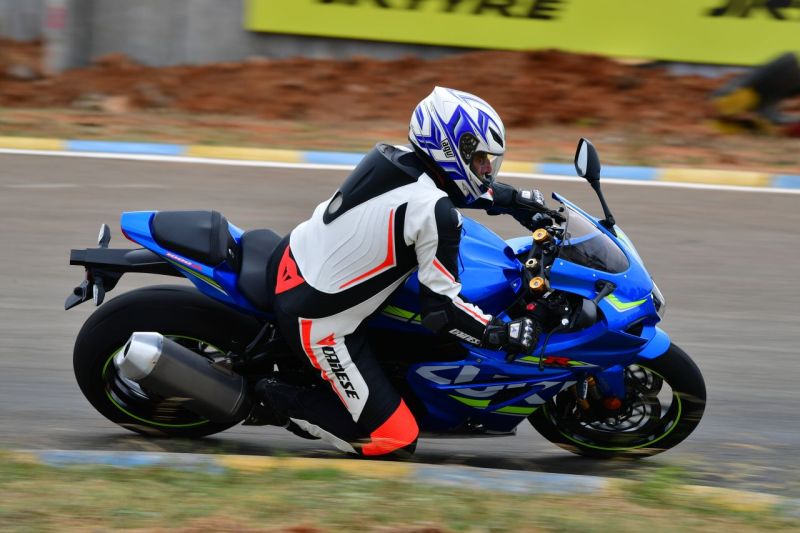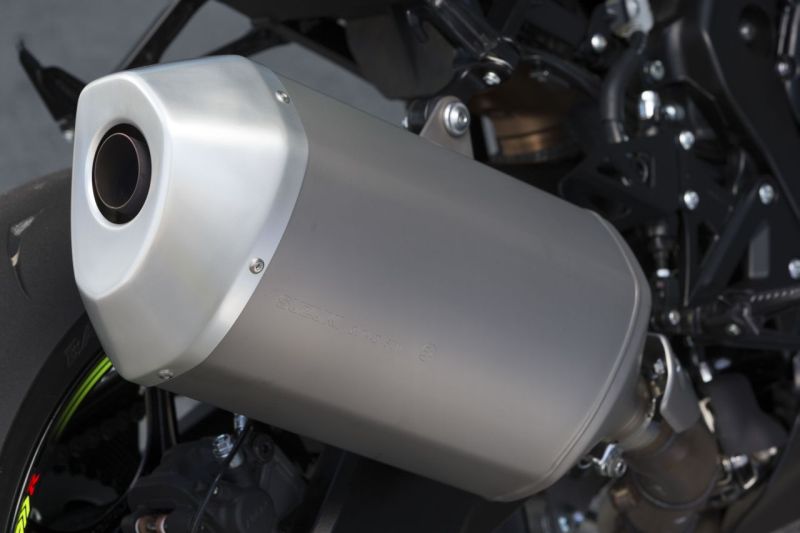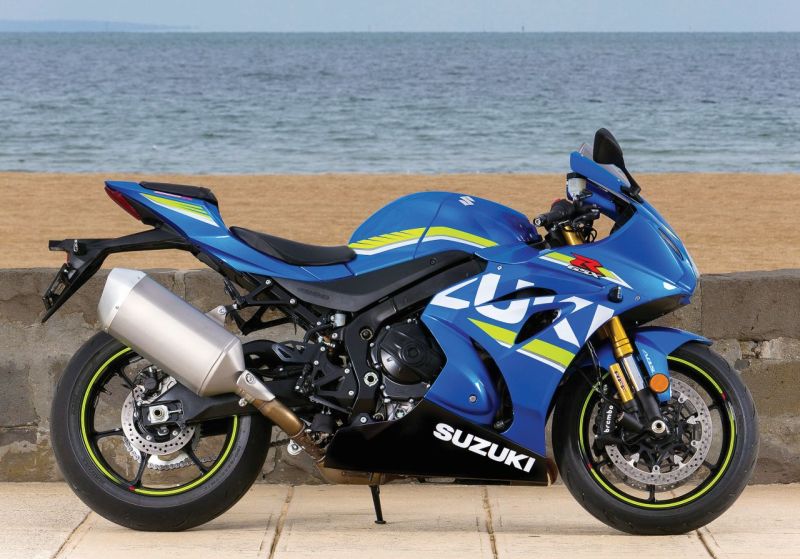
It was during the second session on the R version that I started pushing the bike and I realised the difference between the two bikes. The R feels more nimble, agile, and much sharper than the standard GSXR.
Exiting the slippery last corner in second all hell was let loose as I unleashed the 202 PS of power; first the traction control stopped the rear from spinning up and, when it hooked up, the front end went light and the steering head shook its head before settling down. At the end of the start-finish straight the digital speedometer flashed 240 km/h before I hit the anchors and shifted down, using the power shifter, and trail braking past the first apex into first gear before flicking it right, late apexing the second right, immediately flicking to the left and powering out, up to second and straight line the next corner and braked hard before turning left, not using the full width of the track on the exit to get the correct line for the next corner which is a right-hander. It is important that you get a good drive out of this corner as I shifted up to third before braking hard and shifting back to first, entering the slowest left-right combination of corners on the track. From here up to the start-finish straight the newly laid tarmac is very lumpy and it is very difficult to put down a decent amount of power.
Then it was flick up a gear, climb back across the bike and tip into the next left-hander, with the GSX-R’s fairly roomy size helping to make it notably agile with my above-average Indian body on board. Its fairing is slightly narrower but the tank is lower, giving more space to crouch behind the screen. More importantly, the seat-to-footrest distance seemed relatively generous, so I hardly ever experienced the familiar struggle to get my boots set on the pegs in time for a fast-approaching bend, or to hook another gear while exiting a turn.

For track use I’ve a feeling that the GSX-R’s roominess might be as crucial as its power and weight figures to my enjoyment and pace, though shorter riders might have a very different take. The leg-room would also be welcome on the road, though there you’d be more likely to appreciate the Low RPM Assist function, or the light-action slip-assist clutch.
You have to applaud Suzuki for their effort with this bike, that’s for sure. It’s been a long time coming but they’ve given it their best shot: from the innovative Variable Valve Timing to details such as the more aerodynamic mirrors and flat-topped fairing mount bolts, and the front brake lever with its race bike-like slot to prevent high-speed activation by the wind. Maybe, the styling remains a bit familiar and uninspiring but that seems to matter less when the bike itself is so dramatically improved.

The GSX-R1000R also has LED position lights above its fairing’s air intakes, a lighter top triple clamp, lightweight lithium-ion battery, and a launch control function that allows efficient racetrack starts with the throttle held open. More usefully, it incorporates the quick-shifter.
Whether the GSX-R1000R ends up being quicker than its rivals in the 200-PS club of motorcycling remains to be seen, but it surely won’t be far off and should make a fine road bike too. Importantly, it has that distinctive family character very much in place.


Leave a Reply